What does it take to secure a border? Lessons from the wall dividing San Diego and Tijuana

Two Border Patrol agents discuss the changes at the U.S.-Mexico border, looking at the situation decades ago and now.
- Share via
Reporting from SAN YSIDRO — From here, where Southern California greets Mexico along steep canyons, images of a border gone awry once inflamed the nation’s immigration debate.
“The place was completely out of control back then,” recalled Oscar Peña, a veteran Border Patrol agent who recently stood atop a mesa looking down on an iconic site — the “soccer field,” where U.S. authorities long struggled to hold back the assembled migrants poised to head north.
The soccer field — so called because border crossers occasionally kicked around a ball — epitomized immigration police chaos, but has since reverted to a desolate and relatively serene swath of brush, bisected by two security fences, where few migrants venture.
“If you look behind me now … the soccer field is barren,” said Peña, gesturing to the arid tableau below. “There’s nobody on it.”
In many ways, the story of the soccer field’s transformation from a kind of lawless, latter-day Ellis Island into a forsaken backwater reflects the nation’s incendiary debate about illegal immigration — its high emotion, challenges and cost, both in resources and lives, and the inherent contradictions and misperceptions.
The images of unchecked immigration persist — evident in President Trump’s determination to build a border wall — even as the reality on the ground has shifted dramatically.
“It’s nothing now like it used to be,” said Miguel Fernandez, 35, who was staying at a Tijuana Salvation Army shelter after being deported last year.
He initially crossed as a youth in the early 1990s, when “it was all so easy — you just followed everyone else.”
Between the 1980s and early 2000s, migrants would gather en masse at the soccer field, which sits entirely on U.S. soil, after descending through the adjacent Tijuana neighborhood of Colonia Libertad. They would loiter until dusk as vendors hawked tacos, roasted corn and drinks. The site was known in Tijuana as Las Canelas, after a homemade, cinnamon-flavored beverage, sometimes spiked with tequila, sold at makeshift stands
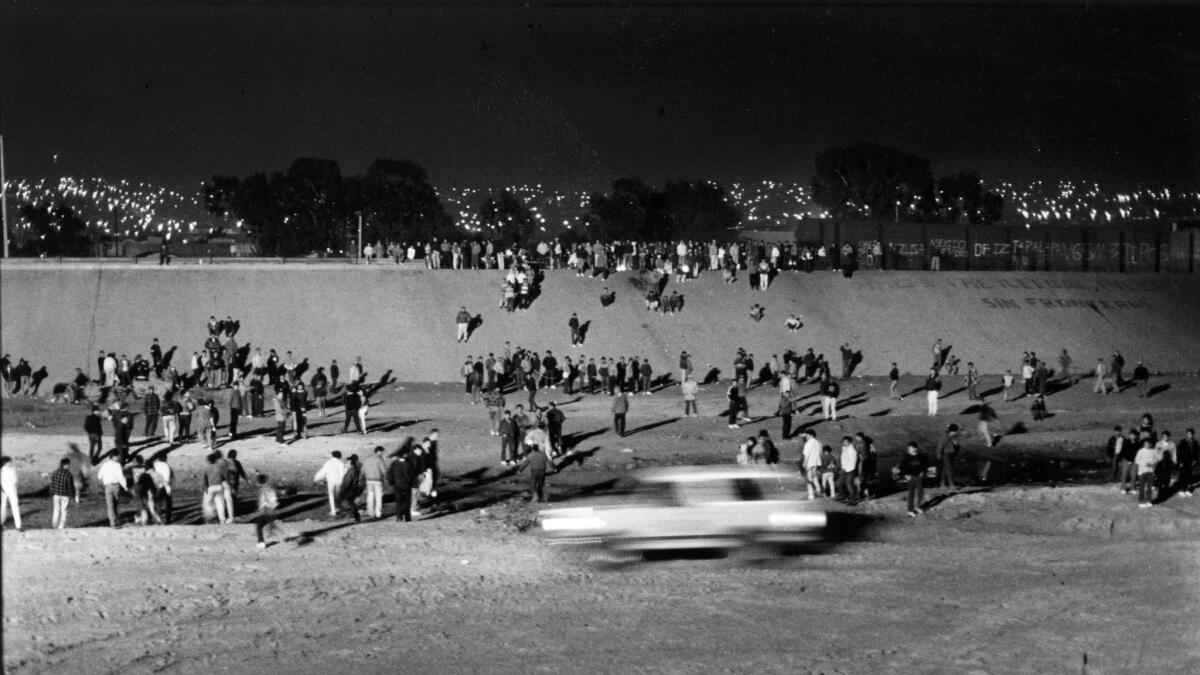
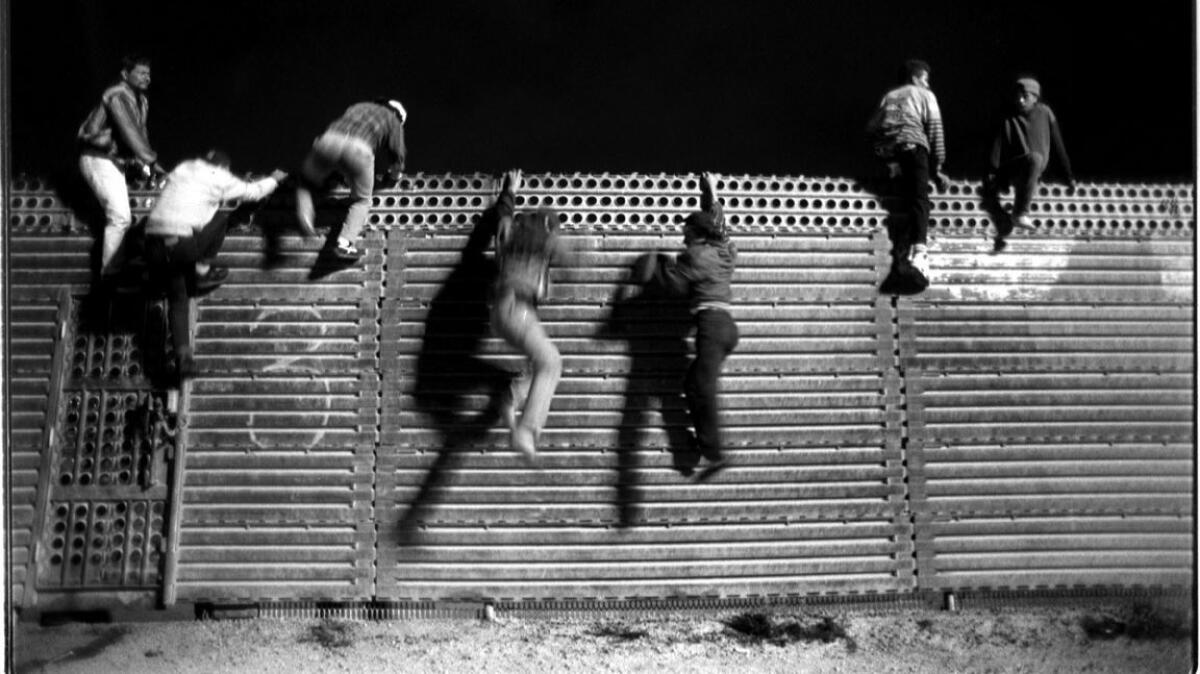

The mood among the northbound legions was often festive, something akin to the atmosphere at a Mexican market, though many, especially women and children, betrayed apprehension about the journey to come. They spoke in hushed tones of planned reunions with loved ones in the north.
As nightfall came, the smugglers, or coyotes, would signal that it was time and groups large and small would begin fragmenting and venturing to the north, along dirt trails through the dark canyons. The odds were stacked against the heavily outnumbered U.S. agents.
From time to time, frustrated U.S. authorities would mount large-scale, empire-strikes-back operations that included aid from Tijuana police, who would move in from the south as Border Patrol agents converged on the soccer field from the north, east and west, helicopter spotlights illuminating the pincer assault. On one such operation, Peña recalls agents arresting some 1,200 immigrants.
“That was about the entire population of my hometown,” noted Peña, a native of rural Texas, who was still in training when agents on foot, on horses and in vehicles swooped in. “I remember thinking: ‘What in the world am I getting myself into?’”
The soccer field also became a go-to spot for politicians, who called for tougher security against the backdrop of the migrant-packed canyon. Other favored TV images included cinematic “banzai” runs, in which scores of migrants bull-rushed the international boundary through lanes of traffic.
“They keep coming,” intoned an inflammatory 1994 campaign ad for Republican Gov. Pete Wilson, over footage of migrant families darting up Interstate 5 at the San Ysidro port of entry. At the end of the spot, Wilson declared: “Enough is enough.”
Among the unintended consequences of Wilson’s rhetoric was a surge in California’s Latino electorate — citizenship enrollments spiked dramatically — contributing to the state’s steep left turn into the Democratic camp.
President Trump, too, has evoked the border chaos with his signature vow to build “a big, beautiful wall” along the border, while labeling Mexican immigrants as criminals and “rapists.”
But Trump’s provocative campaign oratory harked back to soccer-field-style chaos of decades past and ignored a pivotal development — a dramatic plunge in illegal entries into the U.S.
Border Patrol apprehensions tumbled from a near-historic high of more than 1.6 million in fiscal year 2000 to 415,816 in 2016.


Border-wide, from San Diego to Brownsville, Texas, more and more agents have been arresting fewer and fewer border-crossers.
The 1,200 immigrants whom Peña helped arrest that evening in 1985 would today represent more than a two-week haul in the Border Patrol’s entire San Diego sector, which stretches 60 miles east from the Pacific.
Since 1992, the Border Patrol has seen an almost five-fold increase in its ranks, to nearly 20,000 agents nationwide. The Trump administration wants to hire another 5,000.
In 1992, the Border Patrol recorded about 300 arrests for each agent. That number plummeted to about 21 arrests for each Border Patrol agent in 2016.
Prototypes of Trump’s wall — which may end up being a combination of fences and other structures — are expected to be unveiled along the San Diego border later this year. In announcing the prototype plan in June, a top administration official invoked the makeover of the San Diego border, especially the buildup of agents, barriers and technology, such as lights, cameras and sensors, following the launch in 1994 of Operation Gatekeeper.
“Where there was once lawless and undeveloped land … neighborhoods were built and commerce grew,” Ronald Vitello, acting deputy commissioner of U.S. Customs and Border Protection, told reporters in Washington.
Indeed, a pair of outlet malls and a stucco housing development now stand in a stretch west of the San Ysidro port of entry that agents once referred to as the “jungle,” a tangle of brush and swamp that provided cover for clandestine crossers.
Still, many question whether the enforcement and barrier-heavy approach used successfully in San Diego and along other urban border strips — notably in Nogales, Ariz., and El Paso, Texas — is applicable to more rural crossing areas, such as in Texas’ Rio Grande Valley, where the river forms a natural impediment.
Some experts have argued that resources would be better directed at bolstering enforcement at ports of entry, which are major conduits for illicit drugs and many unauthorized immigrants who enter using false or stolen IDs or are concealed in vehicles.
Throughout the San Diego-Tijuana area, illegal crossings have plummeted. Like the now-empty soccer field, the Tijuana River levee zone — where border-jumpers once slipped plastic bags over their shoes and pants to protect against muck in the sewage-clogged channel — seems mostly abandoned. And migrants no longer gather atop Smuggler’s Gulch, a historical haven for illicit trafficking of cargo and people dating back to Prohibition days.
“They say it’s quiet, but I still like to catch as many as I can,” said Border Patrol Agent Chad Nelson, who was manning the fence at the spot where it descends to the beach and juts into the Pacific Ocean. “That’s what we’re here for.”
The Border Patrol in San Diego is on track to record one of its lowest arrest totals since the late 1960s, well before the soccer field achieved its notoriety.
“I’ve got a single,” Agent Eduardo Olmos called on his radio one night as he drove in the 50-yard-wide buffer zone, or security corridor, between the two fences that now mark the border.
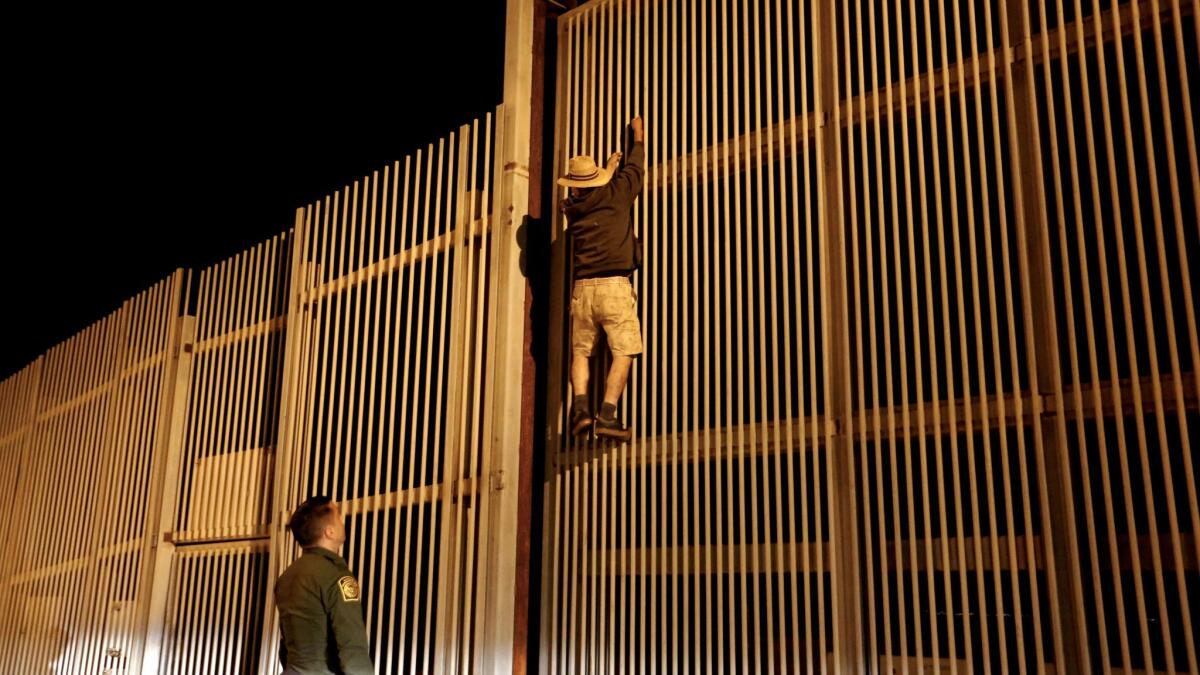
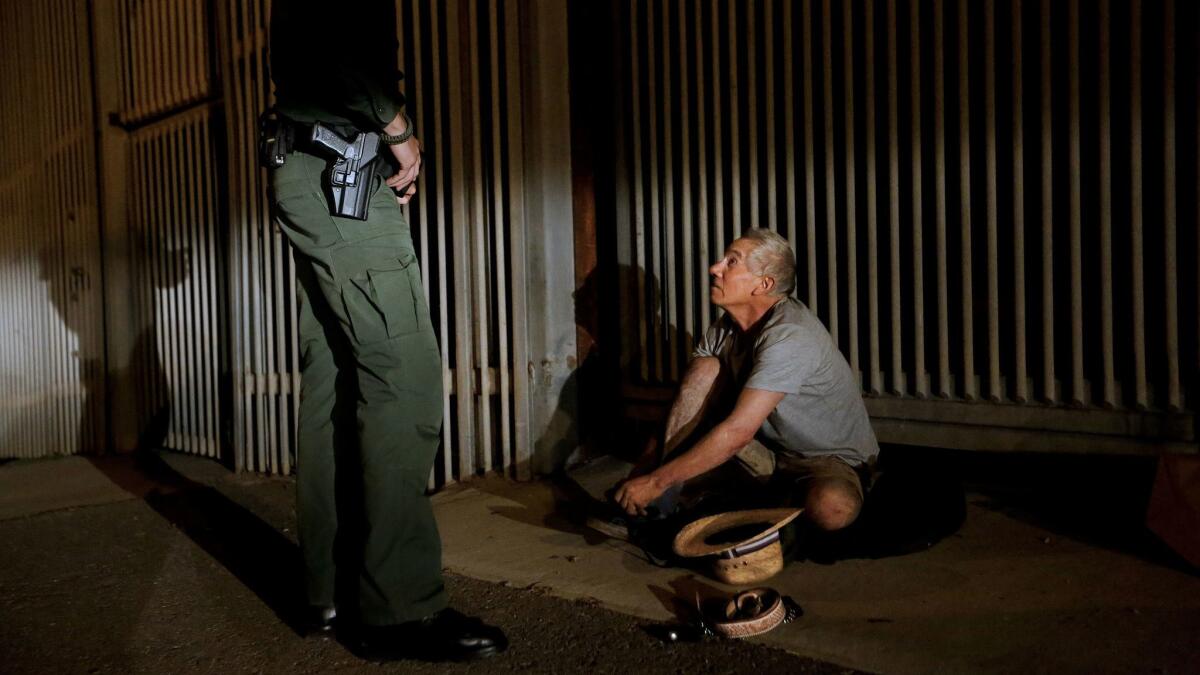
The immigrant, wearing a straw hat and sunglasses, was almost at the top of the 16 foot, mesh-steel secondary fence. He compliantly descended and submitted to being handcuffed, searched and arrested. He turned out to be a 55-year-old one-eyed man from Mexico’s western Guerrero state. His belongings: a cellphone, a $100 bill and 500 pesos, the latter worth $28.
“He’s a pretty good climber,” noted the agent.
During the border’s hectic years, officials estimated that three to four people made it through compared to every person caught.
Today, double fencing follows more than 13 miles of border line from the surf to a deep desert draw at eastern Otay Mesa.
The so-called “primary fence,” between 8 and 10 feet high and just north of the actual international boundary, is composed of surplus military steel airplane-landing mat, much of it from the Vietnam era. The California National Guard began installing the barricade in the early 1990s, fortifying areas that formerly had no fence or featured only porous strands of barbed wire and cable vulnerable to pedestrians and vehicular “drive-throughs.”
Stadium-style lighting illuminates once-dark stretches; all-weather roads allow authorities relatively easy access, even in the rainy season. Agents peer from state-of-the-art night-vision scopes, while sensors mark favored smuggling trails. Video cameras mounted on poles provide additional eyes.
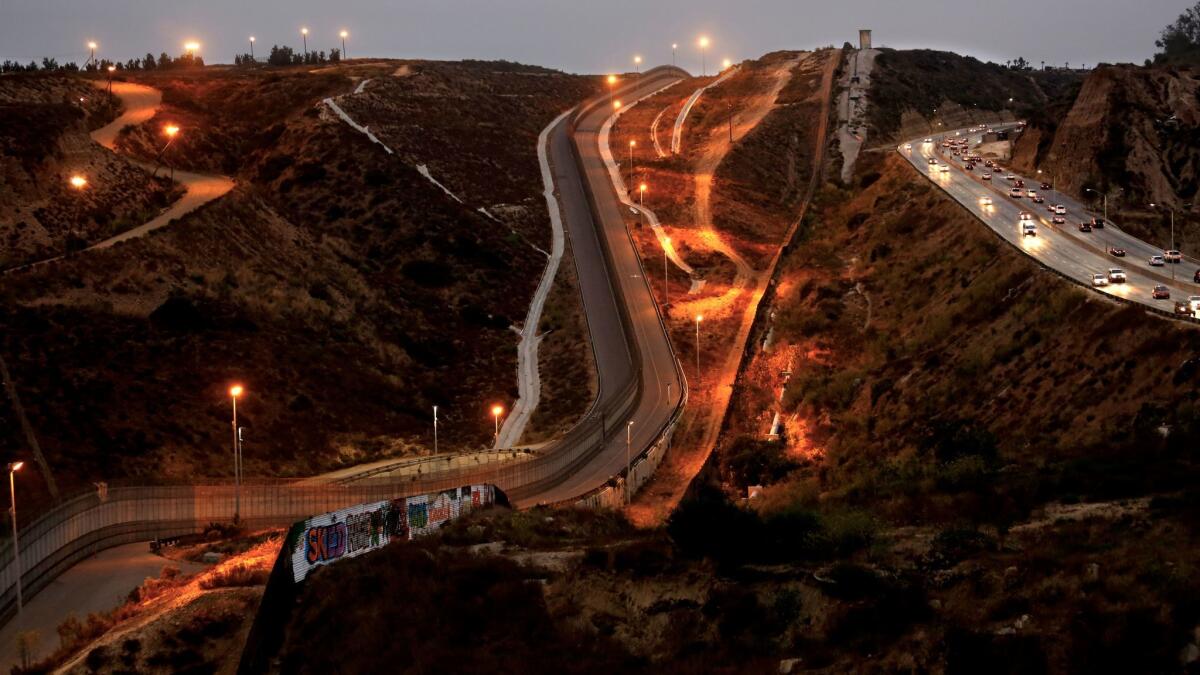
Key to the border infrastructure buildup was the construction of the so-called secondary fence, mostly a mesh steel affair often with rolls of concertina wire at the top, and sometimes along the bottom. At 14 to 18 feet high, the fence is an imposing obstacle. Welding crews endeavor to keep pace with smugglers who regularly employ torches to cut holes in both fences.
The border reinforcement served to make crossings more problematic on several levels.
With heightened difficulty came skyrocketing smuggling fees. Border crossers once paid coyotes several hundred dollars tops to guide them across the border into San Diego’s San Ysidro district, from where they were ferried north. These days, the price for such a service can reach $5,000 or more.
“Smuggling has become a very, very lucrative business,” noted Supervisory Border Patrol Agent David Reid, who spoke at a patrol station where about 15 dejected migrants sat in a lockup awaiting deportation, silver “space blankets” providing some warmth amid a frigid air conditioning.
Before the mid-1990s crackdown, the vast majority of border detainees were quickly returned to Mexico. Many were back at the soccer field or other crossing points within hours. There was no place to hold so many detainees.
These days, however, U.S. officials say, every single detainee is subjected to fingerprint checks to determine if he or she may face criminal charges or deportation.
Shelters in Tijuana that once overwhelmed with families headed north to reunite with kin in the United States now provide refuge to the rising tide of deportees like Fernandez, the migrant who recalled crossing “was all so easy” decades ago.
Like Fernandez, many deportees vow to return to families in the north, but can’t figure out how.
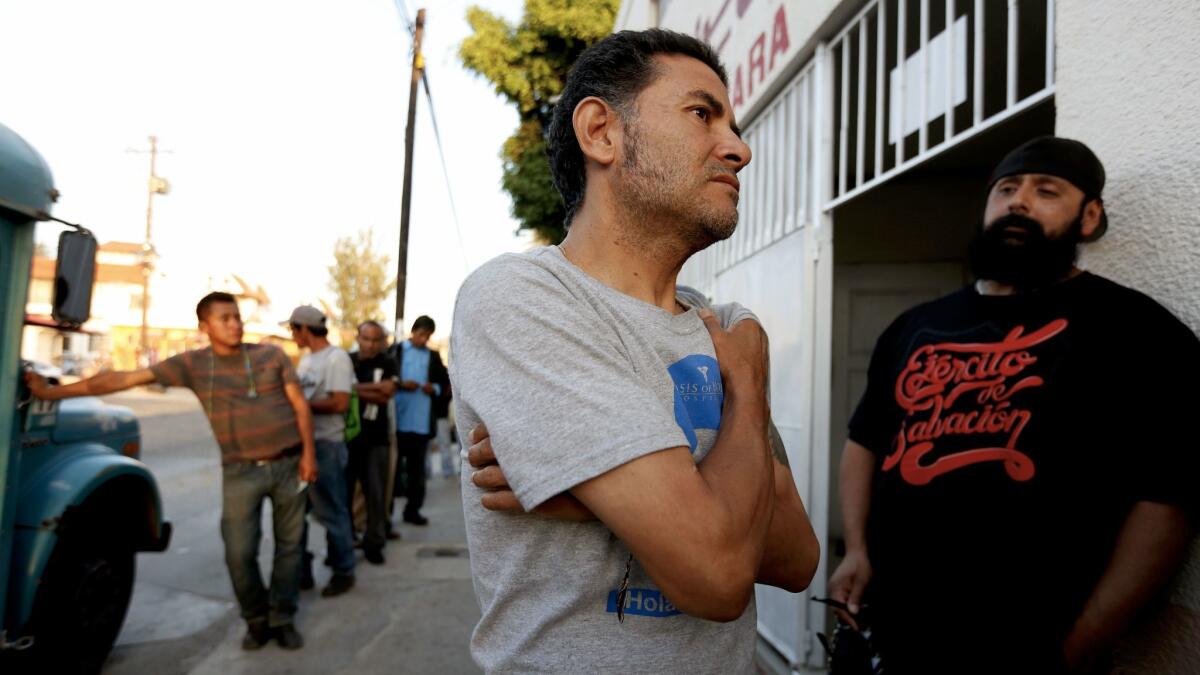
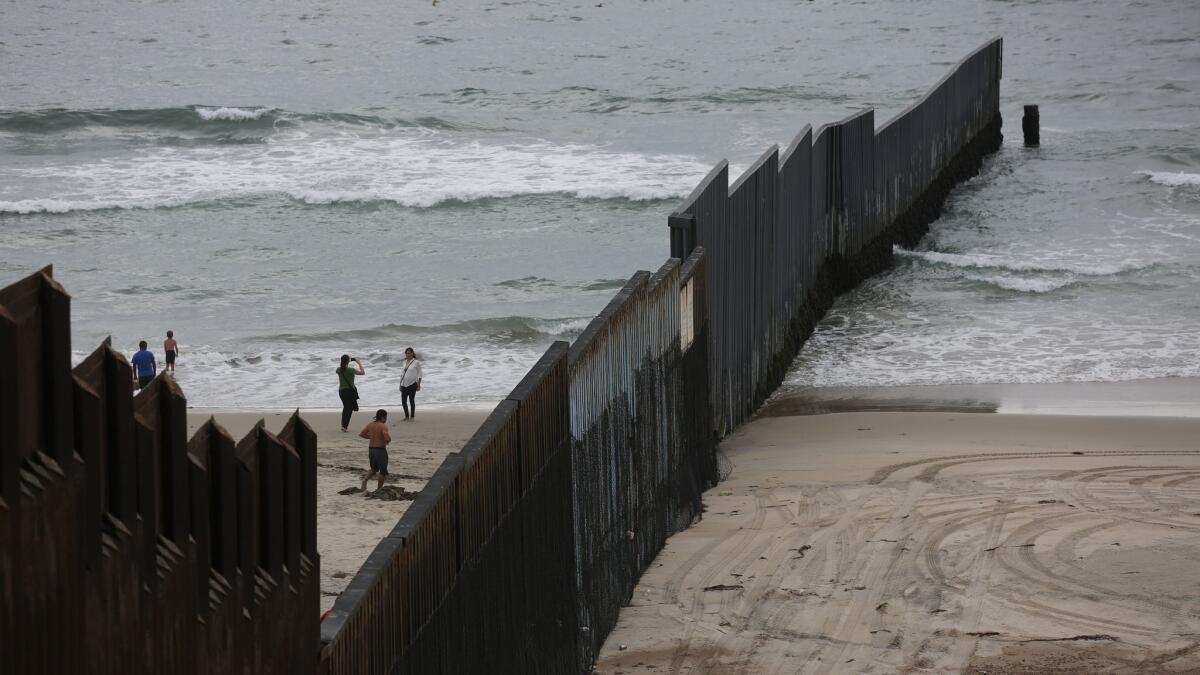
“I have to go back, no matter what it takes,” said Fernandez, who added that he has several siblings and an 8-year-old daughter, Briana, living in the Chino area.
Besides the physical and financial challenges of trying to slip through the heavily fortified border, experts say that other broad factors — including reduced family size in Mexico and expanded economic opportunities south of the border — have also helped reduce illegal immigration.
“There are fewer potential migrants left in sending communities,” noted Wayne Cornelius, director emeritus of the Mexican Migration Field Research Program at UC San Diego.
But people still try to cross, and many perish in the attempt.
The buildup here also served to push much of the undocumented traffic further to the east, especially to backcountry stretches of Arizona and Texas. Hundreds have died of dehydration and exposure in such journeys, fueling criticism that the crackdown channeled border crossers to their deaths.
However, the San Diego-Tijuana corridor presented its own risks, from bandits who preyed on migrants to traffic accidents.
Peña, the veteran border agent, recalls how vigilantes pummeled a pair of men who had been accused of raping two sisters crossing the border. The battered and bloodied body of one man was thrown onto his vehicle.
On another occasion, he recalled, a pregnant woman lost her footing and rolled down a hillside on a nighttime trek. He helped deliver her baby, who didn’t survive.
The ill-fated expectant mother had alighted from a staging point like the soccer field, which for so long stood as a symbol of unbridled immigration. Not anymore.
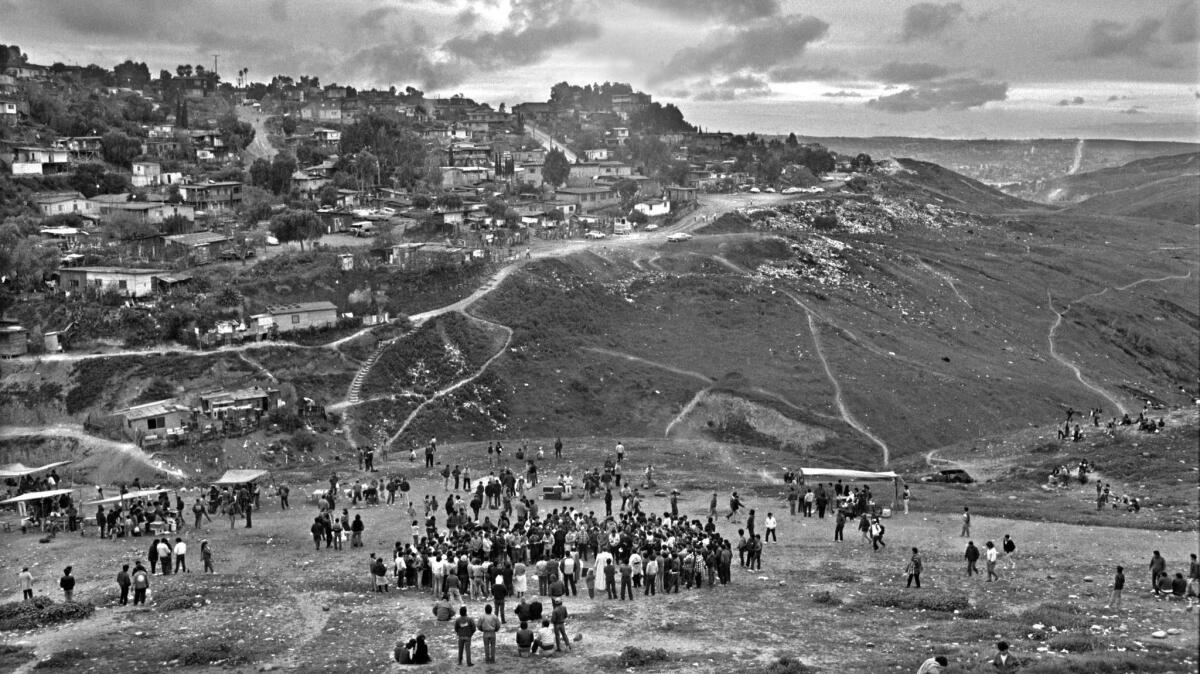

“It’s nothing like it used to be,” said Martin Perez, whose home overlooks the double fencing.
He, like others in the neighborhood, previously made some extra cash peddling food to the throngs at the soccer field. A certain nostalgia overcomes Perez as he remembers those frenetic days, the sense of history witnessed.
Sometimes a priest would hold a service for the migrants, offering his blessing before they took off for the north.
“At least then there was work for everyone here, you could make a good living selling to the people,” recalled Perez as a number of relatives played cards in the pre-dusk calm. “It was a completely different place. There was a lot of action. You can’t imagine it.”
As he spoke, a Border Patrol cruiser perched on the security road some 50 yards away. The agent inside appeared to be peering through binoculars at the Tijuana side. But all was quiet in Colonia Libertad. No one was headed his way. The soccer field has been tamed.
twitter: @mcdneville
ALSO
Kenya’s opposition calls for a boycott to protest the deaths of 24 people in post-election clashes
Meet Charles Robert Jenkins, an American detained by North Korea for 40 years
Departure of Syrian rebels and refugees from Lebanon raises specter of forced returns
More to Read
Sign up for Essential California
The most important California stories and recommendations in your inbox every morning.
You may occasionally receive promotional content from the Los Angeles Times.













